Movie theater owners look beyond popcorn to find new concessions at CinemaCon; Chicano photographer George Rodriguez captures two very different L.A.'s over a 50 year period; CalArts celebrates world music with its own salsa band.
In the CalArts world of music, salsa is a popular draw for students
The California Institute of the Arts — more commonly known as CalArts — opened its doors in 1970 and soon established itself as one of the leading private art schools in the nation. It became known for its animation and visual art departments, but from the beginning it also developed an expansive music department with an interest in sounds from around the globe.
The school’s World Music and Arts Festival happens April 27-29 on the campus in Valencia. Among the groups performing at the festival for the first time is the CalArts Salsa Band.
Every Wednesday afternoon, the band gathers for a rehearsal, in the same classroom where the members began learning about Latin music last September. The band was formed only seven months ago, but the young musicians sound like they’ve been playing together for years.
The band was created 27 years ago, when Aaron Serfaty, a renowned percussionist from Venezuela, attended CalArts to finish his degree in music.
“So we put together a very small group," says pianist David Roitstein, chair of the jazz program at CalArts and director of the salsa band. "It was only about six or eight people, and we played a set of Afro-Cuban music at a noon concert and everybody got so excited that they all said, I want to do that with you.”
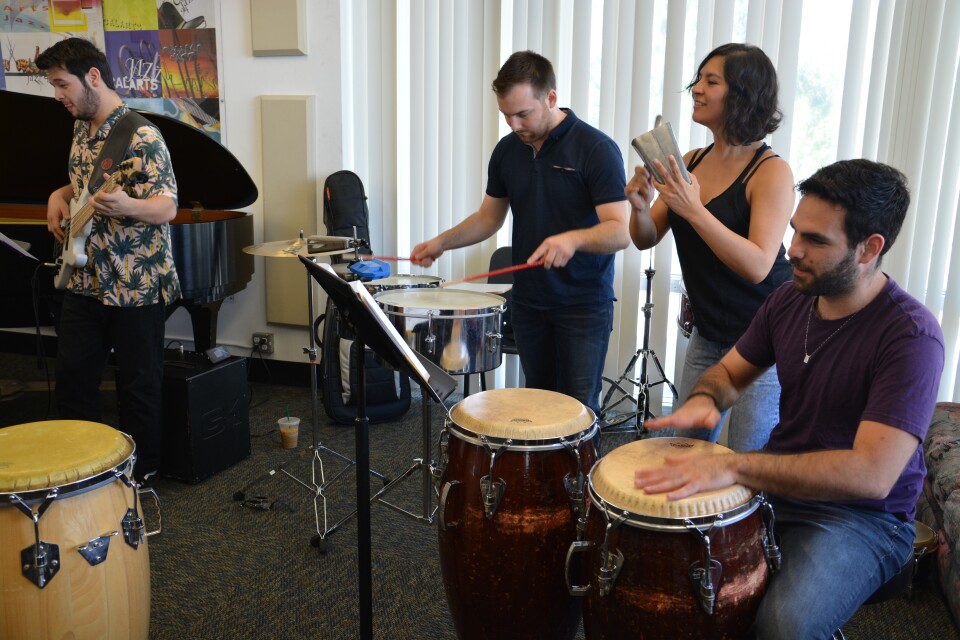
That small group grew into a regular ensemble and, for the first few years, Roitstein accepted any student who wanted to join. But having a band of more than 20 members was no easy task. Roitstein says he downsized the group to 12:
“Three or four singers, four horns, three percussion, bass and piano. And that’s the instrumentation that we arrange for. I start over, every single year, with new music. We learn a couple of easy descargas by ear, but then I spend a lot of one-on-one time, helping them arrange songs for our book. And by this time in the year we have probably 25 or 30 songs.”
Roitstein says every band member contributes with at least two arrangements and that’s how they learn to get into the heartbeat of the music.
The Latin music program at CalArts appears to be expanding. Every Tuesday, a group of 15 students get together in a large classroom for the Brazilian Drumming Ensemble. Today, they’re rehearsing the "Bloco" Afro style of Carnaval drumming from Salvador, Bahia.
Percussionist Alex Shaw co-directs the drum ensemble. He’s a second year MFA student in the World Percussion program and producer of the World Music and Dance Festival. He says this year’s event includes the addition of a second Latin percussion stage:
“There are more Latino students on campus than we’ve ever had before, and so I think the fact that these ensembles are present and growing is a reflection of who’s on campus these days.”
At the salsa band’s rehearsal, 25-year-old Tiffany Lantello takes the lead, singing a classic cumbia from Colombia. Lantello is pursuing an MFA in performance and composition — and she also plays the sitar. After a year at Cal Arts, Lantello says she decided to join the salsa band to improve her musicality:
“My mom is from El Salvador and every time we were at family parties they would be playing the music. So it wasn’t like I was actively seeking out that kind of music, but it was sort of around through my childhood. And so when I started singing with [the band] it was just so much fun and I’m so glad that I’m doing it.”
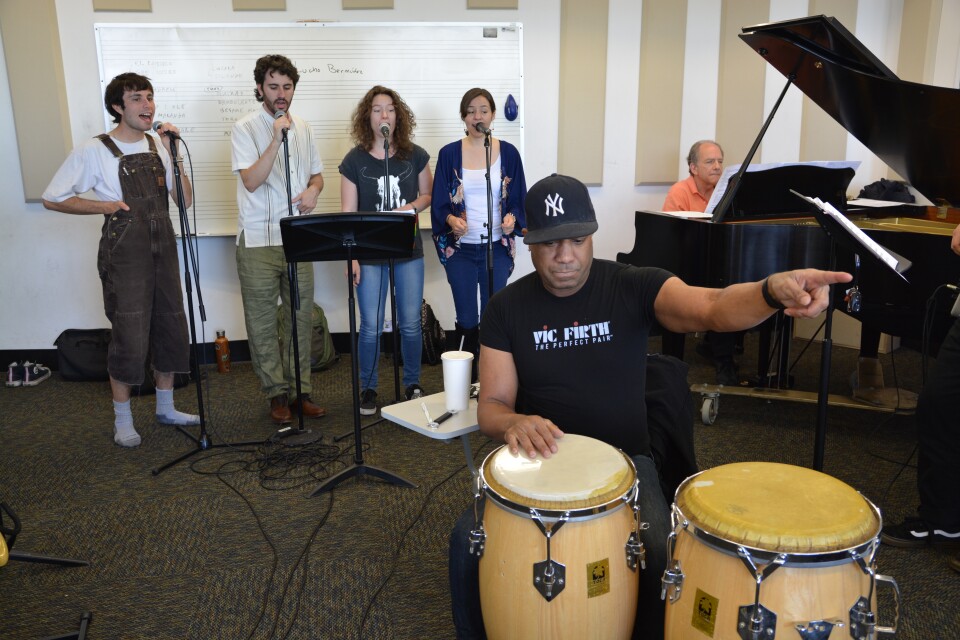
In a small rehearsal room, 24-year-old pianist Pablo Leñero plays an original classical improvisation. Leñero, who is from Mexico, is getting an MFA in composition, piano performance and conducting. He’s also a singer with the salsa band. He says he wanted to play piano in the group so he asked director David Roitstein:
“'Let me play, por favor,' and he was like, ‘Pablo, the thing is, I am the bandleader and if I’m not the pianist, the band doesn’t run.' And he said, 'Well, can you sing?' I said, 'Sure. I’ll try it!'”
Leñero says, as a classical pianist, the experience he’s getting with the salsa band is more than he could have imagined: “Performing and having people dance to your music is mind-blowing and it has made me reassess what I want to do. Because sometimes I don’t necessarily get the same satisfaction about performing piano. I like making people happy and I like when people enjoy when we’re singing, when we’re dancing or rolling Rs in very high pitches.”
Renowned Latin percussionist Joey De León co-teaches the band with Roitstein. De León says a year-later, the results are clear:
“It’s funny where you start and where they finish. The seed is sprouted and now you see this unwavering sense of relief [from the students]: OK, man, I broke through this passage and now I’m feeling comfortable. And you instill confidence [in them].”
That confidence has given students the tools they need to take the next steps, after they graduate. Roitstein says many students who've played in the CalArts Salsa Band are now successful professional musicians: “Two or three years after they finish school, I might go to a club and see them with a band and they’re burning it up.”
That’s what the CalArts Salsa Band can do — besides getting people to dance.
The CalArts World Music and Arts Festival takes place April 27-29 in Valencia. Admission is free.
‘Double Vision’: Photographer George Rodriguez's contrasting images of L.A.
Even in his early 80s, George Rodriguez still carries his camera wherever he goes.
His new book, Double Vision: The Photography of George Rodriguez, and an exhibit at the Vincent Price Art Museum, span over half a century of images capturing two very different sides of Los Angeles. There are his "day job" photos of film stars and teen heartthrobs from when he ran the Columbia Pictures photo lab. He also shot many prominent musicians for various magazines, including some of the first images of Ice Cube and Dr. Dre in N.W.A.
And there are photographs chronicling his own personal interest in the Chicano protests and farmworker strikes of the 1960s and '70s. During the grape boycott between 1965-70, Rodriguez embedded with Cesar Chavez to document him as he fasted for worker rights.
Many of his photos document the South and East L.A. neighborhoods where Rodriguez started honing his craft as a teenager.
Interview Highlights:
On the origins of his love for photography:
I remember the exact moment. I was fortunate to [live] in the district of Fremont High School. And they had an incredible photography course. I needed an elective, and some guy said [to] take photography because it's easy. That's how it all began.That was kind of a perk, the learning about photography. I needed a job. I was 15 years old. You know, you hear your parents talking – I just needed to go out there and make a living. I had to help out. But it was the greatest thing that ever happened to me because it laid a foundation for me later, going on to working in the best labs in the Hollywood area. It's just something that happened. It's what I knew.

On how photography became an escape for him:
My school at the time was a bit rowdy. I could have been in a gang. I could have done that easily, but that wasn't me. Because of the neighborhood I was thinking, I've got to get out of here. I got a job on a steamship as a photographer. But then I got really homesick and came back and started working in photo labs. And that's a great foundation for taking photos, because you [learn] how film works.

On documenting the 1970 school walkouts:
When I worked at Columbia in the photo lab, during my lunch hours if there was something going on, like the walkouts at the high schools – 1970 – I would take off and go down there and shoot what I could. The police had a field day. Those are high school kids. But they were literally hitting them with batons and roughing them up. That's not why I was there, but I was fortunate to be able to document that part of the Chicano experience.
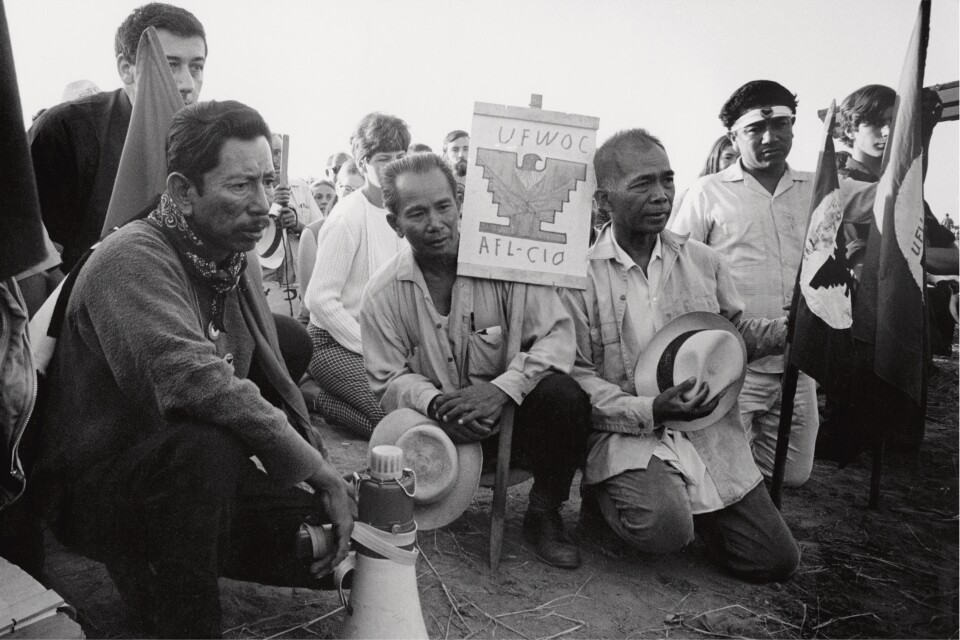
On how the idea for his book sprouted:
I'm a big fan of LIFE Magazine photographers. They were my idols. I saw what they did with the African-American movement and I wanted to do the same thing for the Chicano movement when it began. That's what I was going to do — document all these marches and events and write a book. Initially it was going to be titled "Así es mi raza," which more or less translates to: That's the way we are. But then I met [writer and professor] Josh Kun. We met because he was curating a show for the Grammy Museum and came into my studio to look at some rock 'n' roll stuff. He asked me if I'd be interested in doing a book. I told him I was interested in doing a book, but my version was just of the Mexican-American experience. But then he and other people said, No, it's bigger than that because you worked in so many areas.
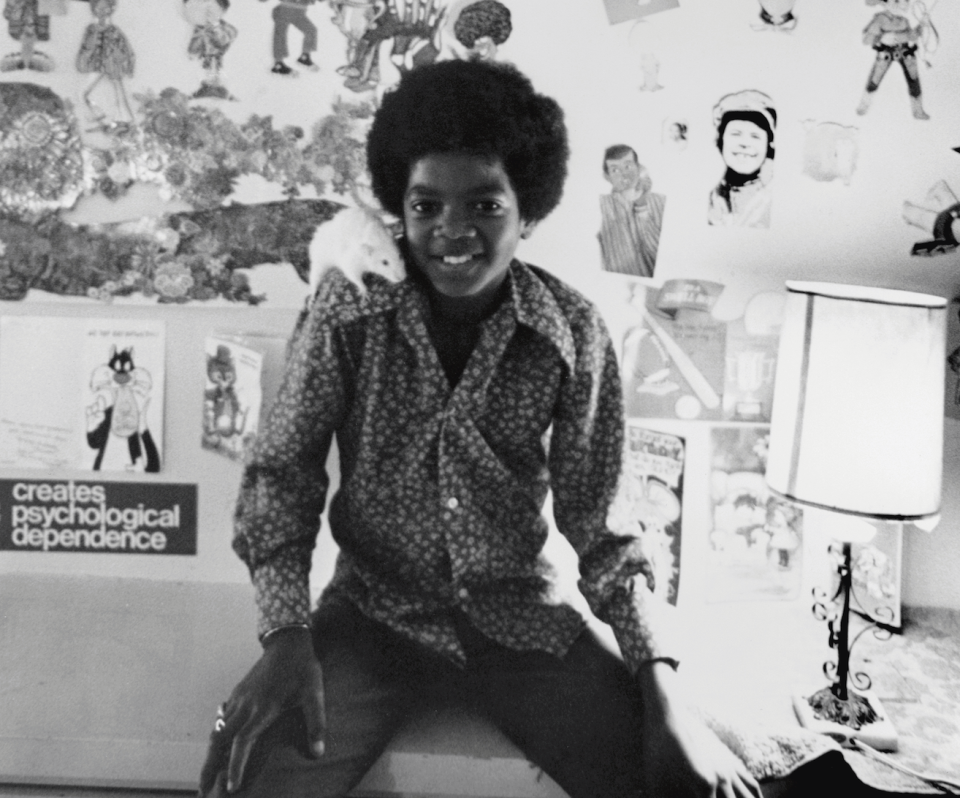
On photographing musical icons:
I remember shooting The Doors at the Whisky-a-Go-Go when they started. [Jim Morrison] wore these long sleeved white dress shirts. And I thought that was amazing, it was different for a rock 'n' roller. He was just a regular guy. I shot the first Jackson 5 liner photos. Meeting a 12-year-old Michael Jackson ... he was just a great kid, full of life.
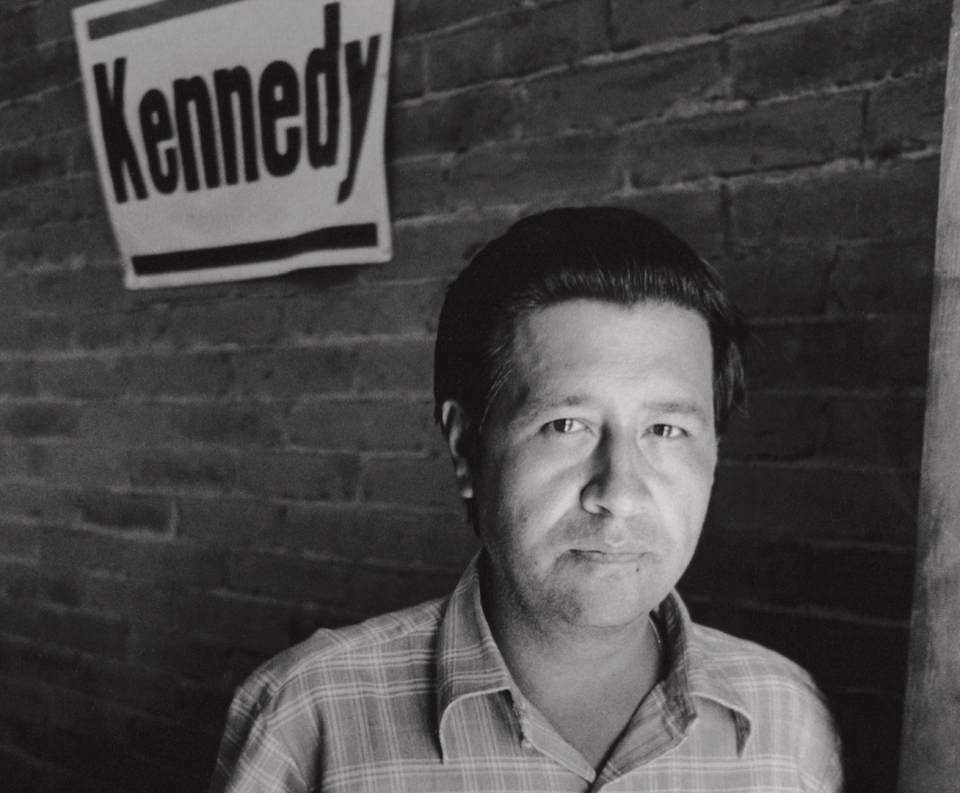
On photographing Cesar Chavez:
The times that I was around him he was busy. This was during the grape boycott so he always had people around him. He was never by himself. That one picture I have of Cesar with the Kennedy banner behind him – I recall just pulling him aside and having him stand there because I thought the lighting in that spot was really good. He [was] very, very cooperative, but busy. When you're around somebody like that, you know something's going on. You know that individual is not into it for himself. He's into it to help people.
"Double Vision: The Photography of George Rodriguez" is on exhibit at the Vincent Price Art Museum on the campus of East L.A. College in Monterey Park through February, 2020.




